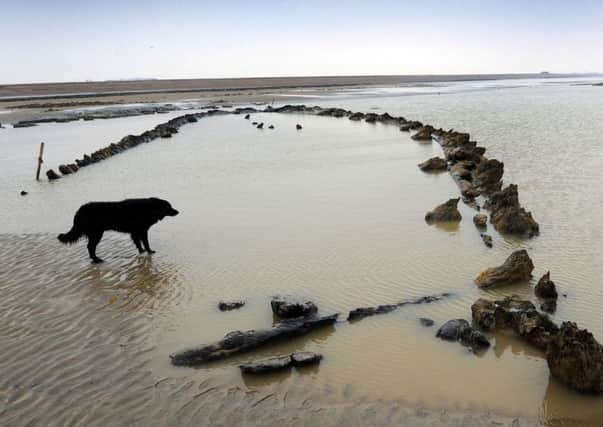Sunken forest is revealed


The sunken forest, which can be seen on the sand at low tide, is thought to be at least 6,000 years old and dates from a time when sea-levels were 100ft lower than today.
Dr Barry Yates, from Rye Harbour Nature Reserve and Sussex Wildlife Trust, said: “The shape of the beach can change after a storm. Sediment has gathered because we have been through a calm period, but a storm would wash all this away.”
Advertisement
Hide AdAdvertisement
Hide AdHe said that while locals know of the sunken forest, many visitors to the beach are unaware of what they are walking on and that the area had largely gone unstudied.
He said: “The peat that is under Pett Level has been quite well-studied, because it is land, and the material is there.
“Here, we have got it as the sea exposes it. With every tide it’s degrading, whereas the pristine peat is protected by the land, it has got pollen in it, and you can excavate it.”
The forest is sometimes mistakenly referred to as petrified, but has not been there long enough to turn into stone, Dr Yates said.
Advertisement
Hide AdAdvertisement
Hide AdThe trees are soft enough to break and poke a finger into - one way people differentiate between forest wood and remains of old sea defences is to see if the timber is hard or spongy.
Centuries ago, the area would have been freshwater marshland with trees growing, and the coastline much further out than it is now.
In addition to the sunken forest, the coastline has the remains of the warship Anne dating back to 1690 parts of which have also become more exposed due to the extreme weather.
The Anne was a casualty of the Battle of Beachy Head in which British and Dutch ships suffered heavy losses in a fierce fight with the French.
The damaged warship was scuppered.
Advertisement
Hide AdAdvertisement
Hide AdThe beach at Cliff End is littered with dinosaur footprints and fossils from the Lower Cretaceous period.
Discoveries include dinosaur ankle and tail bones, and 20 years ago a girl found part of a crocodile jaw, said Ken Brooks, from Hastings and District Geological Society.
Mr Brooks said: “Every time a cliff erodes, geologists see something interesting.”